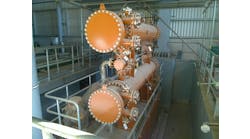For many decision makers faced with making important strategic decisions on alternatives, reliance on traditional metrics such as net present value (NPV), internal rate of return, discounted payback and, in some cases, sensitivity analysis, often is supplemented with an ad hoc consideration of difficult-to-quantify elements fundamental to the decision at hand. Qualitative information for a number of reasons, often is difficult to “draw in” to the strategic decision-making framework, so it’s often glossed over, relegated to an appendix or, worse, ignored. However, most business decisions, especially in the electric utility sector, often have significant, non-quantifiable benefits that in many cases are fundamentally linked with the entity’s strategy and shouldn’t be ignored. One way to combine quantitative and qualitative dimensions into a structured framework is what I call the “Decision Dimensions” approach to strategic decision making. It’s a fundamental departure from the normal focus on NPV and other financial metrics, and one that can be directly mapped to key elements of a firm’s strategy to help facilitate the alignment of business decisions and strategy.
Who’s keeping score?
The Decision Dimensions approach is centered around the notion of the scorecard, which can be color-coded to show how each alternative fares in terms of the metrics deemed to be important. For illustration, consider a scorecard that could be used for assessing the strategy around a hypothetical coal-fired power plant called the Marcus Evans Fossil Plant. The plant has no pollution controls, burns Illinois Basin coal and is located in a position of strategic importance to the stability of the transmission grid. Regulatory uncertainty with respect to the regulation of hazardous air pollutants, the Clean Air Transport Rule and potential carbon regulation have forced decision makers to reevaluate the importance of the Evans plant.
To read the rest of this Plant Services article, click here.

